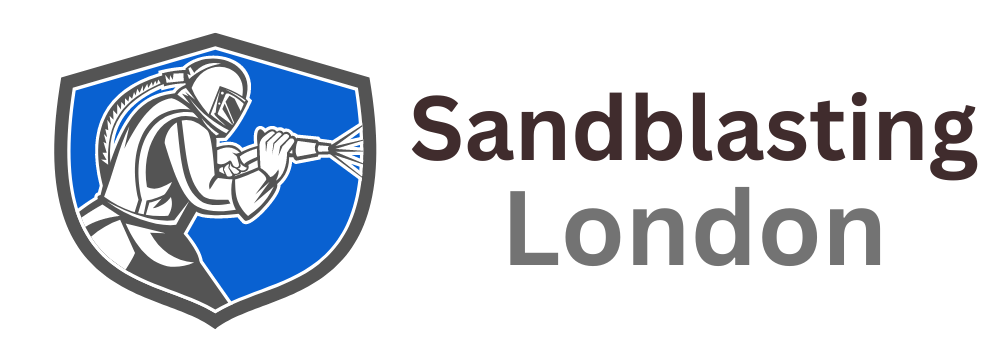Grit Blasting vs Sandblasting: Understanding the Key Differences
Surface preparation is a critical step in many industries, from construction and automotive manufacturing to marine shipbuilding and metal fabrication. Two of the most common methods for cleaning, preparing, and refinishing surfaces are
grit blasting and sandblasting. While they may seem similar, understanding their differences can help you choose the right technique for your project.
What is Grit Blasting?
Grit blasting is a process where small, sharp abrasive particles are propelled at high speed onto a surface to remove paint, rust, scale, or other contaminants. The abrasive material used in it can vary, but common options include aluminium oxide, steel grit, and silicon carbide. The process produces a more aggressive surface profile than sandblasting, making it ideal for heavy-duty cleaning and preparation.
Industries such as automotive restoration, shipbuilding, and oil and gas frequently rely on it because it provides a roughened surface that enhances paint or coating adhesion. It is also widely used in metal fabrication shops for preparing metal before welding or coating.
What is Sandblasting?
Sandblasting, often called abrasive blasting, uses fine sand particles to clean or smooth surfaces. Unlike blasting, which uses sharper, harder abrasives, sandblasting relies on softer particles, making it suitable for delicate surfaces where precision is important. The process is commonly used in restoring sculptures, historical structures, or automotive parts that require careful cleaning without damaging the material.
For those unfamiliar with the materials, sand blaster sand is the primary abrasive used, providing a smoother finish compared to the rough profile produced by blasting. This makes it ideal for applications that prioritise aesthetics and gentle surface preparation.
Key Differences Between Grit Blasting and Sandblasting
While both processes involve propelling abrasive materials onto a surface, there are important distinctions:
- Abrasive Material: It uses harder materials like steel grit, whereas sandblasting uses fine sand.
- Surface Finish: It creates a rougher texture suitable for heavy coatings, while sandblasting produces a smoother finish for delicate surfaces.
- Equipment and Pressure: It typically requires higher pressure and specialised equipment, while sandblasting can often be performed with simpler tools.
- Environmental Considerations: Sandblasting can generate more dust, which requires careful containment and protective measures, whereas certain
grit blasting media can be recycled or collected for reuse.
A related technique, shot blasting grit, uses spherical steel or ceramic particles instead of angular abrasives. Shot blasting is especially effective for large-scale surface cleaning in industrial applications, providing a consistent finish with reduced surface damage.
Choosing the Right Method for Your Project
When selecting a blasting method, consider factors such as the material being treated, the desired finish, and the scale of the project. It is generally better for heavy-duty industrial surfaces or projects requiring strong adhesion for coatings. Sandblasting is preferable for finer work or restoration tasks.
If you are searching for grit blasting near me, it’s important to choose a provider that can handle the specific abrasive type and equipment required for your surface.
Similarly, if you are sourcing materials, looking up sandblasting grit near me can help you locate suppliers that meet industry standards and ensure the right finish for your work.
Benefits and Limitations of Each Technique
Grit Blasting Benefits:
- Effective on tough, rusted, or coated surfaces
- Creates a strong surface profile for paint and coatings
- Suitable for industrial and heavy-duty applications
Grit Blasting Limitations:
- Can be too aggressive for delicate materials
- Requires specialised equipment and safety precautions
Sandblasting Benefits:
- Ideal for fine, detailed work
- Produces a smooth, aesthetically pleasing finish
- Versatile for restoration and light industrial use
Sandblasting Limitations:
- Less effective on very tough surfaces
- Can produce significant dust if not managed correctly
Understanding these advantages and constraints helps you determine which technique will deliver the best results for your specific project, whether you are restoring a classic car, cleaning metal structures, or preparing surfaces for coating.
Both
grit blasting and sandblasting play vital roles in surface preparation across multiple industries. It is more aggressive and suited for heavy-duty applications, while sandblasting offers a gentler, more precise finish for delicate surfaces. Choosing the right method ensures efficiency, quality, and safety for your project. By considering factors such as surface type, desired finish, and equipment availability, you can make an informed decision and achieve optimal results.
At
Sandblasting London, we combine professional expertise with years of industry experience to deliver high-quality surface preparation services. We prioritise safety, reliability, and customer satisfaction, providing tailored solutions for businesses in construction, automotive manufacturing, shipbuilding, and more.
New update on X:
Grit blasting vs sandblasting – understanding the key differences!
